Why Smart Entrepreneurs Are Turning to AI-Driven Outsourcing to Scale Faster
Scaling a young company can feel like sprinting up an escalator that’s already moving—every step forward is pricey and slow. Recruiting full-timers, onboarding them, and hoping their skills still match next quarter’s roadmap is a costly gamble. (The Society for Human Resource Management pegs average cost-per-hire at about $4,700, and many firms say the real bill is three-to-four times the role’s salary once onboarding and churn are factored in shrm.org .) That talent tax is why a new playbook is catching on: AI-driven outsourcing, a hybrid model that pairs smart automation with on-demand expert professionals.
Team Two Zero Eight
6/29/20253 min read
1. The Talent Crunch Meets the AI Boom
AI is no longer experimental whiteboard math—more than three-quarters of global companies already use some form of AI in at least one business function mckinsey.com. At the same time, the freelance economy is exploding: 28 percent of U.S. knowledge workers now operate independently, generating $1.5 trillion in annual earnings investors.upwork.com, and the global gig market is growing at 15 percent CAGR velocityglobal.com. Smart founders see the overlap: AI handles repeatable grunt work while a curated bench of freelancers brings niche skills on tap.
2. What “AI-Driven Outsourcing” Really Means
A purely robotic future isn’t the goal. The winning recipe blends machine speed plus human nuance:
Deloitte’s 2024 Outsourcing Survey notes that vendors embedding AI reduce human effort “by double-digit percentages across routine processes.”
3. Five Ways the Hybrid Model Crushes Scaling Challenges
Speed to Market
Generative AI can spin first-draft code or marketing assets in seconds, while a vetted freelancer polishes and deploys. In an MIT–Stanford field study, customer-service agents armed with an AI assistant resolved 14 percent more tickets per hour hai.stanford.edu.Elastic Cost Structure
Hire only the hours you need. No benefits, no idle payroll—just project-based spend that flexes with demand.Global Talent Access
By 2027, 86.5 million Americans are projected to freelance, topping 50 percent of the U.S. workforce upwork.com. Platforms let startups tap that pool overnight, finding a Web3 lawyer in Lisbon or a growth hacker in Manila.Round-the-Clock Productivity
AI never sleeps, and a distributed team covers time zones. Customer queries logged at midnight are drafted by a bot, refined by a UK-based VA at dawn, and in a client’s inbox before the NYC office opens.Lower Risk, Higher Resilience
If demand spikes, spin up more contractors; if a market cools, ramp down without layoffs. AI audits productivity data so you see which partners deliver ROI in real time.
4. Mini-Case: From Bottleneck to Blitz-Scale
When SaaS startup NovaLedger landed a Fortune-100 pilot, its two-developer team faced a six-week integration deadline. Instead of rushing a senior hire, they:
Deployed an AI code-generation tool for boilerplate API calls.
Hired a freelance DevOps engineer for 20 hours to harden security.
Used a generative-search chatbot to draft knowledge-base articles, which a content specialist polished in six hours.
Result: NovaLedger shipped in 19 days, under budget, and retained zero permanent overhead once the pilot finished.
5. Getting Started—Three Playbook Moves
Map Repeatable Tasks
List workflows ripe for automation (data entry, first-line support). Feed them into low-risk AI pilots.Build a Curated Talent Bench
Maintain profiles of designers, analysts, and PMs you trust. Review quarterly; AI-generated performance dashboards highlight top performers.Blend Governance with Agility
Use simple SOPs—when a bot drafts, a human reviews; when spend hits X, finance signs off. Clear guardrails avoid the “shadow IT” chaos that killed early RPA projects.
6. The Takeaway
Recruiting full-timers for every skill spike is yesterday’s strategy. AI-driven outsourcing turns fixed payroll into fluid capacity, letting founders chase momentum instead of headcount. As the freelance market deepens and AI gets sharper, the companies that master this hybrid dance—software speed plus specialist smarts—will out-iterate, out-price, and out-scale the field.
References
Brynjolfsson, E., Li, D. & Raymond, L. (2023) Generative AI at Work. NBER Working Paper 31161. Available at: https://www.nber.org (Accessed: 29 June 2025).
Deloitte. (2024) Global Outsourcing Survey 2024. Deloitte Insights. Available at: https://www2.deloitte.com (Accessed: 29 June 2025).
McKinsey & Company. (2025) The State of AI: How Organizations Are Rewiring to Capture Value. Available at: https://www.mckinsey.com (Accessed: 29 June 2025).
SHRM. (2024) ‘Eliminating Biases in Hiring: Structured Interviewing & AI Solutions’. Society for Human Resource Management. Available at: https://www.shrm.org (Accessed: 29 June 2025).
Upwork. (2025) ‘1 in 4 U.S. Knowledge Workers Now Freelance’. Upwork Investor News. Available at: https://investors.upwork.com (Accessed: 29 June 2025).
Upwork. (2025) Freelancing Stats in 2025: Market Size, Earnings, and Future Trends. Available at: https://www.upwork.com/resources (Accessed: 29 June 2025).
Velocity Global. (2024) ‘Gig Economy Statistics 2024’. Available at: https://velocityglobal.com (Accessed: 29 June 2025).


Growth, handled. Coffee, mandatory (just ask our 4 PM espresso).
© Two Zero Eight, 2025. All rights reserved.
_______________________________

